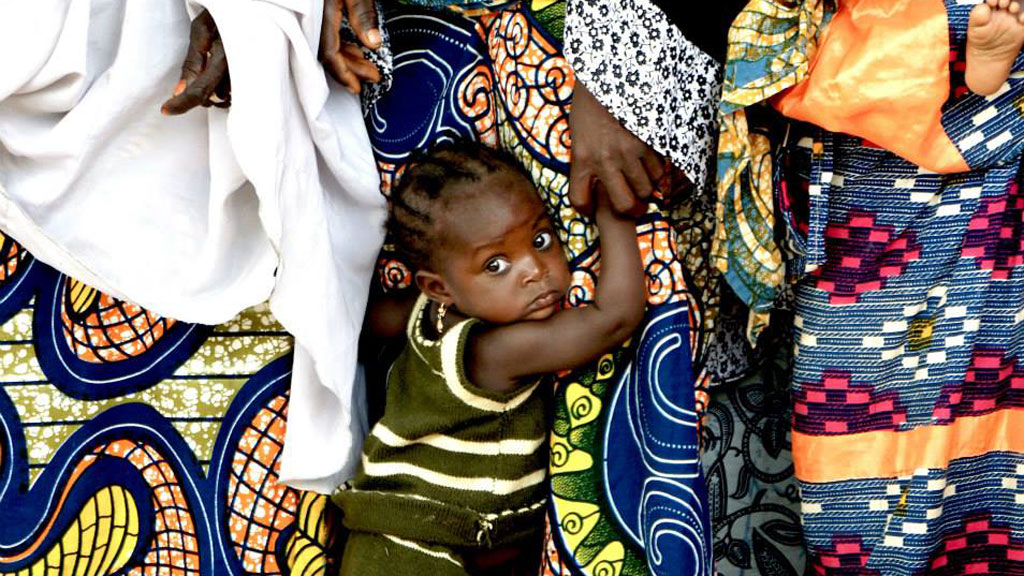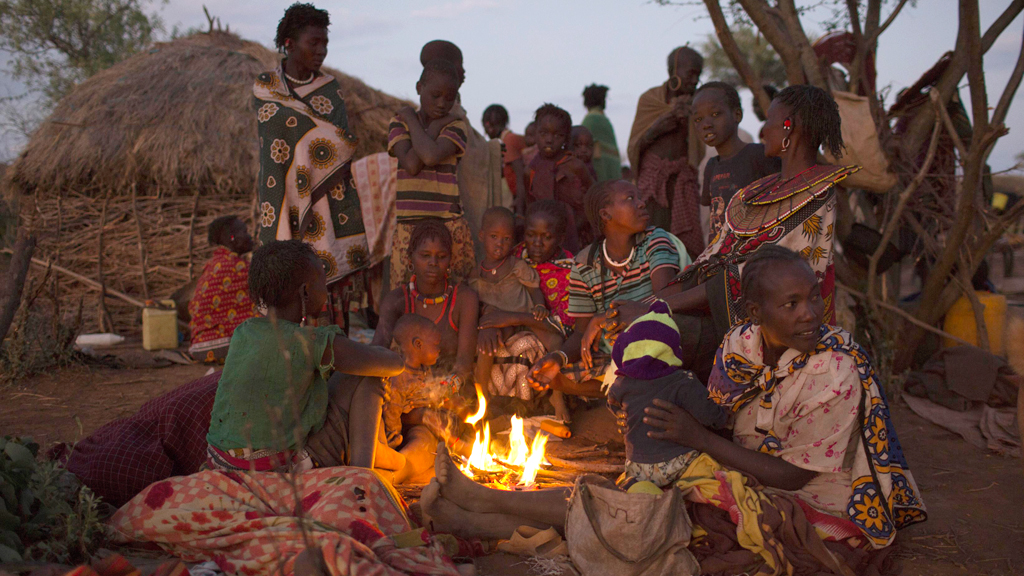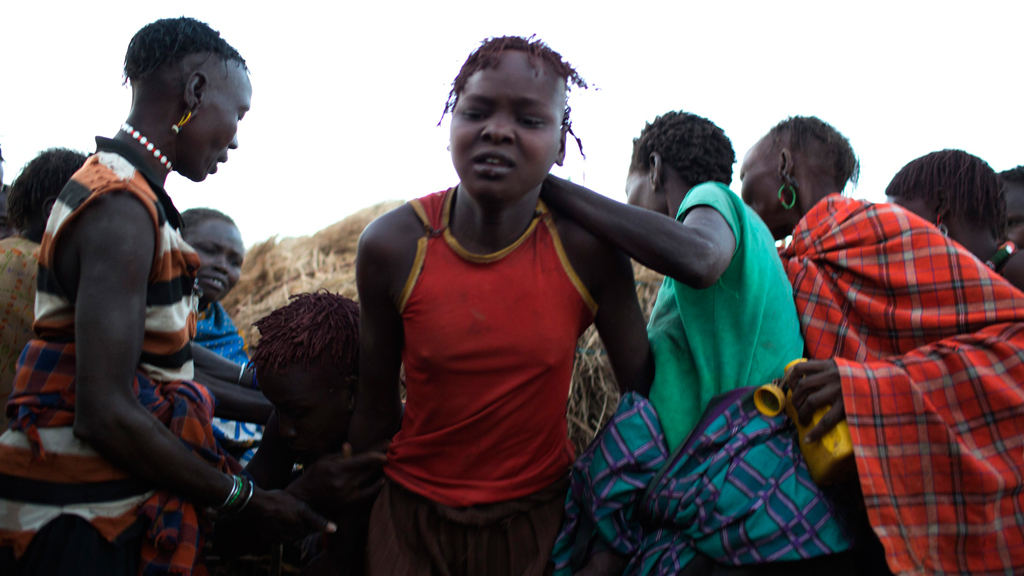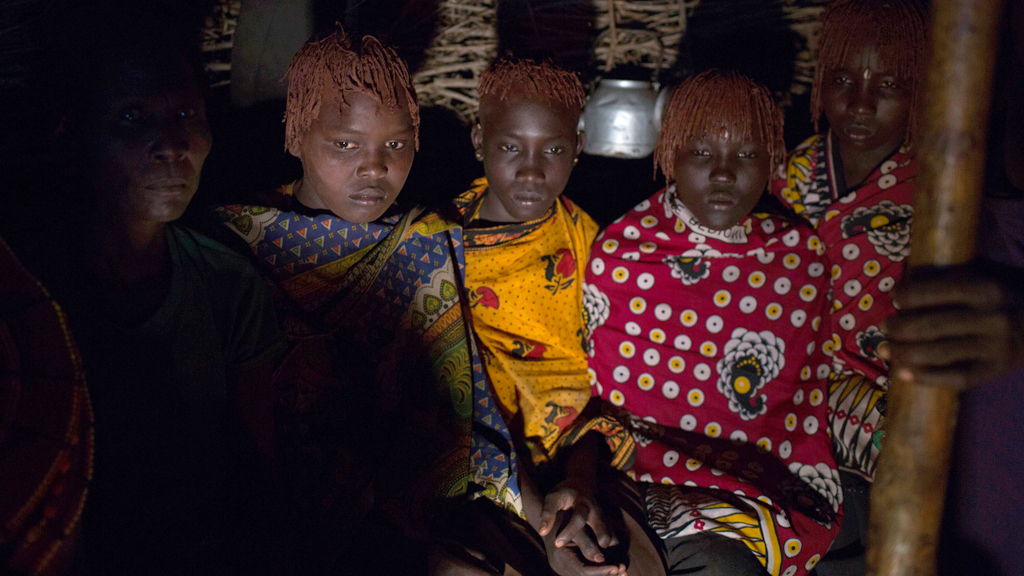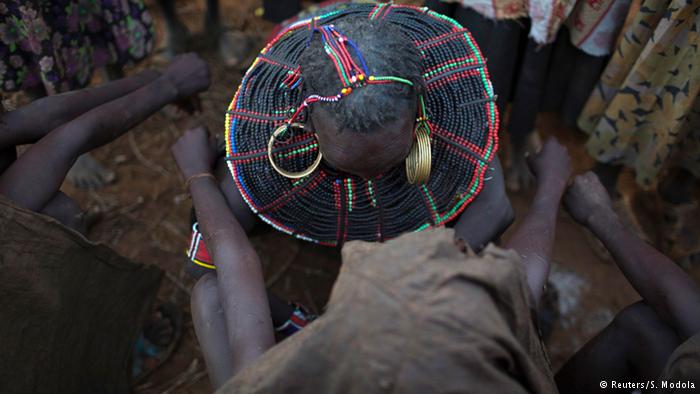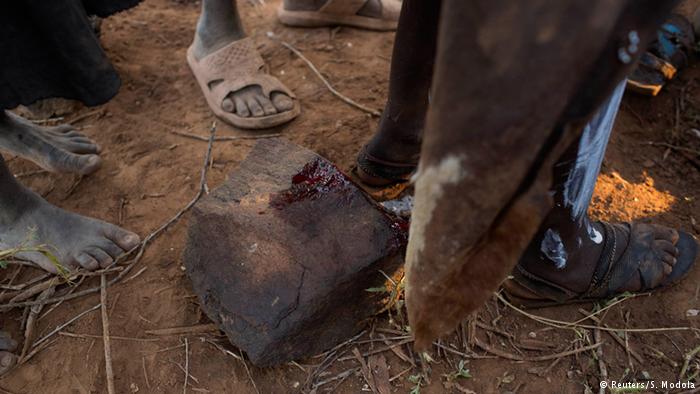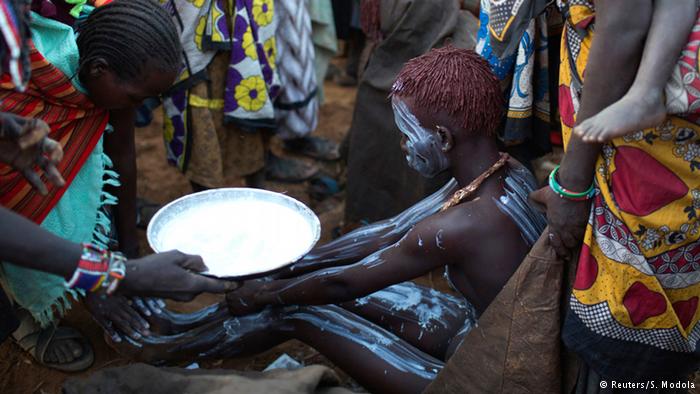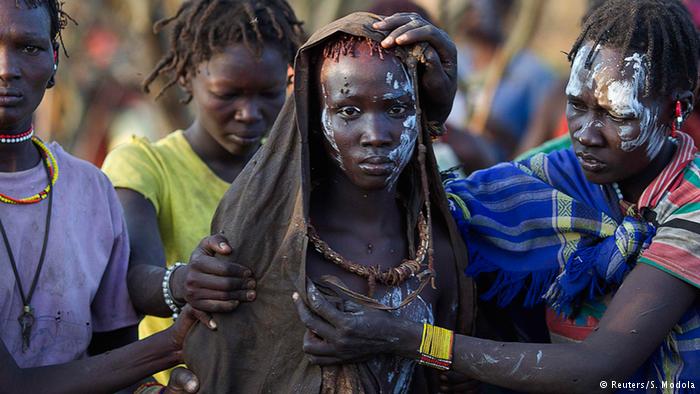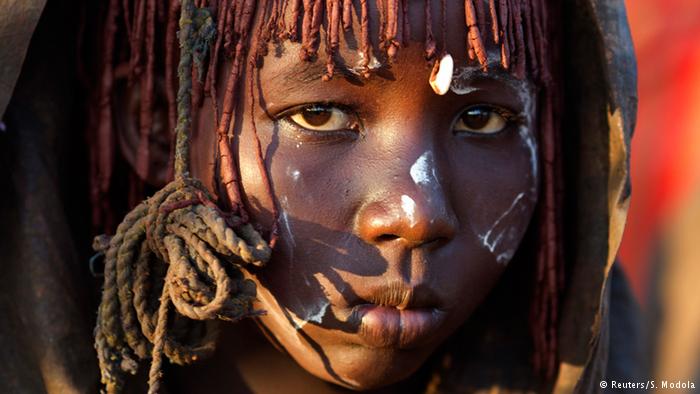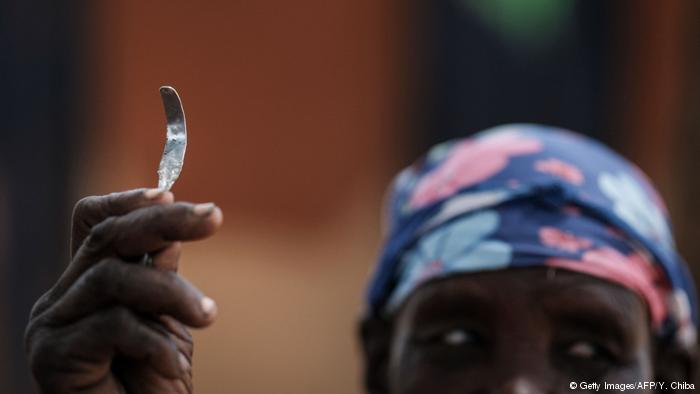FGM: a tradition that remains alive despite international condemnation
Female genital mutilation is still practised in many African countries, despite being officially banned. Girl members of the semi nomadic Pokot ethnic group in Kenya have to undergo the painful ritual.
One razor blade for all
The woman who conducts the ritual cutting in Kenya’s Rift Valley has already cut four girls – with one razor blade. According to the tradition of the Pokot people, the brutal mutilation marks the transition from girl to woman. Although the practice is outlawed in many countries, numerous girls still have to undergo the ritual, especially in rural areas.
Preparing for the ceremony
In the cool morning hours before the ceremony, Pokot women and children warm themselves at the fire. Women who do not undergo FGM have little chance of marrying. Above all in rural areas marriage is essential for women’s social integration and economic survival. Those who reject FGM are exposed to societal pressure and often cast out of their communities.
Resistance is impossible
Before the cutting, the girls are undressed and washed. They know that they will suffer health problems later, as their mothers do: cysts, infections, infertility, birth complications. FGM is practised in 28 African countries, on the Arabian peninsula and in Asia. In Europe, the daughters of immigrants are also at risk.
The fearful wait
Pokot girls wait apprehensively in a hut in the Rift Valley’s Baringo County. Female genital mutilation has been banned in Kenya since 2011. UNICEF says some 27 percent of the country’s female population between 15 and 49 have undergone FGM. The ceremony is mostly carried out without anaesthetics or sterile instruments and often results in lifelong suffering for the women.
Critical observers
A cutter at work. The girls are expected to endure the potentially fatal experience stoically and without crying out. According to the World Health Organization, ten percent of girls die during the operation, while another 25 percent die of the consequences at a later date. The true figure is believed to be much higher. In Somalia 98 percent of women have undergone FGM.
Blood on a Stone
The FGM method used varies from one ethnic group to another. The Pokot sew together the vulva to make a smooth surface. The WHO differentiates between three forms of FGM. For method 1, the clitoris is removed, for method 2, the labia minora are additionally cut away, for method 3, known as infibulation, the labia majora are removed and the wound is sewn together, leaving only a small opening.
Painted White
The Pokot ritual includes painting the girls’ bodies white. It is accepted that the girls may die from infection or loss of blood. There are now public awareness campaigns in many countries but their impact has so far been limited. In Kenya, a special police unit was set up in 2014 and there is a hotline for people to report suspected cases of FGM.
Lifelong Trauma
The traumatised girls are taken away, wrapped in animal skins. In the eyes of the Pokot, they are now ready for marriage and a high bride price can be demanded. Many ethnic groups believe FGM is a hygienic measure, that women who have been cut are more fertile and remain faithful to their husbands. The consequences of the painful act cannot be totally reversed by plastic surgery.
From mother to daughter?
This young girl will never forget the barbaric procedure. Will she be able to protect her own daughter from sharing the same fate? In some countries, FGM is carried out on babies – because it is illegal and a crying baby attracts less attention than a child that is constantly in pain.
Author: Andrea Schmidt / sh
WTO RECOMMENDS
Spare the blade
The one-million-strong Bohra community in India is a small group of a muslim sect called the Ismaili Shias who are believed to have originated in Egypt. In India, they have settled in the western states of Gujarat, Maharashtra and Rajasthan. This group practices female genital mutilation (FGM).
Breast ironing: ‘Yes, I did this to my daughter’
Fomuso Kazua (name changed) was just a few days shy of turning 12 when she attained puberty. That was also when she started showing signs of developing breasts. One day, out of the blue, her mother told her that she would have to do something that would seem unpleasant to Fomuso, but she had no choice because all girls had to go through it.



